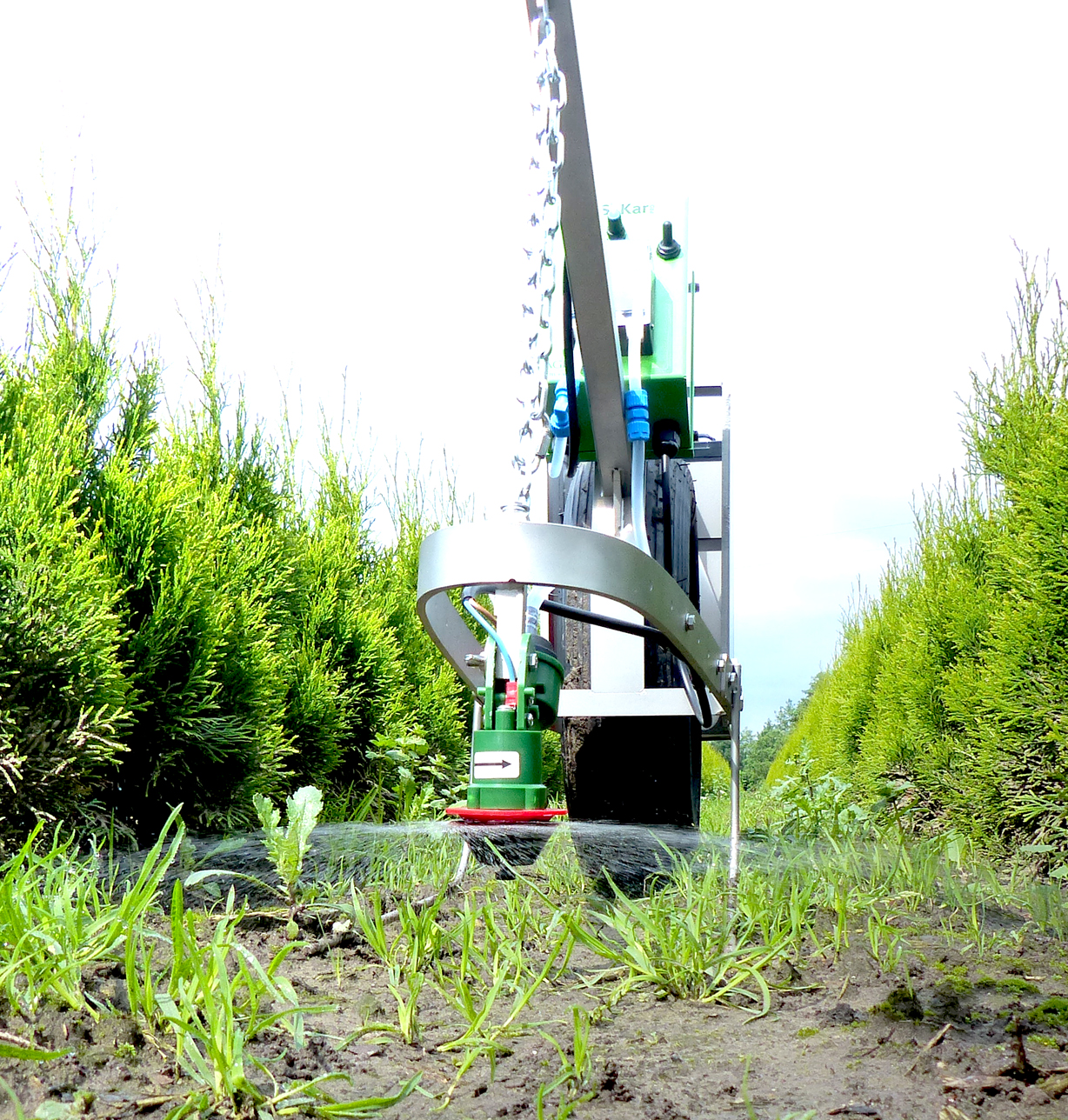
More yield
less agent
The use of low volume spreading technology has been increasing in tree cultivation for years. LvS is a DRT-recognized, effective and low-drift form of weed control in row crops and on cultivation strips next to grass or soil strips. This is often done in combination with mechanical weed control and it also offers options for combining with row fertilization.

From spray
to sprinkle
Where traditional systems require pesticides to be pressed from a tank through caps into droplets, LvS uses a different method in which the product is gradually fed through a tube to a spreading head. This spreading head spreads it using a rapidly rotating disc, without applying excess pressure. The resulting droplets are coarse and therefore little sensitive to drift, while the volumes are so small that the scattering pattern is almost imperceptible to the naked eye.
By using the low volume spreading technique (LvS), time, resources and weight can be used more efficiently in weed control. This contributes to sustainable cultivation and simplifies production at the lowest possible costs. The technique uses only 10-40 liters of water per hectare with 0.5 – 1.5 liters of agent.
More informationLvS benefits at a glance
- Cost and environmental savings through lower dosages (minimum 50% for foliar herbicides)
- Capacity increase and time saving due to low tank filling.
- Less weight and soil compaction.
- Easy to combine different plantrows.
- Low drift and suitable for all common agents.
- Suitable for a mix of agents.
- Insensitive to blockages and easy to clean.
- Very flexible to add on existing systems, and built to customers requirements.
- Easy conversion from high volume to low volume dosage.
- Speed-dependent dosing with GPS build-up prevents under- or overdosing.
- Simple integrated combination with mechanical weed control and row fertilization.
- Possibility to control 2 different deliveries via A+B group, ideal for a wider track than plant rows.
Adjustable
drop size
Globus has extensive knowledge and experience in the field of sustainable low-volume weed control and crop protection.
We have the latest LvS technologies, including V-image spreader heads with adjustable droplet size. Adjusting the droplet size makes it possible to make the droplet size even less drift
This controllability ensures a more flexible working method and is safer for the crop. This means you can continue working longer with changing wind conditions because the droplet size can easily be adjusted from the cabin.
Get in touch









